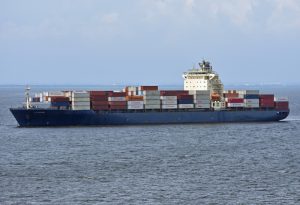You’ve likely seen Singapore’s port statistics—handling over 37 million TEUs annually—but you haven’t grasped the full economic cascade these numbers trigger. Each container moving through Singapore’s terminals generates multiplier effects worth examining: S$2.50 in economic value for every dollar of direct port revenue, according to Maritime and Port Authority data. What you’re missing is how this single sector’s performance determines outcomes across finance, real estate, and technology investments—outcomes that shape regional competitiveness in ways policy frameworks must address.
Direct Economic Contributions: Employment, GDP, and Revenue Generation
Since Singapore’s establishment as a global maritime hub in 1819, container shipping has evolved into the nation’s most significant economic engine, directly contributing S$26.4 billion to GDP in 2022—approximately 4.8% of the country’s total economic output. You’ll find that container shipping in Singapore sustains 170,000 direct jobs across port operations, logistics coordination, and vessel management sectors. The Maritime and Port Authority reports annual revenue generation exceeding S$15.2 billion through port dues, cargo handling fees, and ancillary services. This sector’s productivity metrics demonstrate 37.5 million TEUs processed annually, establishing Singapore’s operational superiority in regional maritime commerce and infrastructure utilization.

Cross-Sector Impact: Finance, Insurance, and Technology Innovation
Beyond its operational boundaries, container shipping catalyzes S$18.7 billion in cross-sector economic activity through Singapore’s maritime finance, insurance, and technology ecosystems. You’ll find 130 maritime financial institutions managing US$80 billion in ship financing assets, while Protection & Indemnity clubs underwrite 45% of regional container tonnage. Singapore’s maritime technology sector processes 12 million electronic bills of lading annually through blockchain-enabled platforms. The Maritime and Port Authority’s regulatory frameworks facilitate S$2.3 billion in maritime insurance premiums yearly. You’re observing integrated value chains where container movements generate derivative transactions across banking, legal services, and digital infrastructure, multiplying port throughput’s economic impact by 2.4x.
Infrastructure Development and Real Estate Transformation
Container shipping’s infrastructure demands have reshaped S$47.2 billion worth of Singapore’s land use and real estate development since 2000, with port-adjacent industrial zones experiencing 340% appreciation in land values. You’ll observe Tuas Port’s development triggered S$20 billion in supporting infrastructure: automated warehouses, intermodal facilities, and logistics parks. The government’s Master Plan 2019 rezoned 1,089 hectares specifically for maritime-linked developments. Port proximity reduces your logistics costs by 23-31%, driving warehouse rental premiums to S$3.20 per square foot in Tanjong Pagar and Pasir Panjang districts. Infrastructure investment multipliers reach 2.8x, generating S$132 billion in cumulative construction and property sector activity.
Vulnerability and Resilience: How Global Disruptions Affect Singapore’s Economy
When global supply chains fracture, Singapore’s container shipping sector transmits economic shocks at velocities that exceed most developed economies—the 2021 Suez Canal blockage reduced your port throughput by 8.3% within 72 hours, triggering S$1.4 billion in trade value losses across 14 days. Your government’s resilience mechanisms include S$48 billion in maritime infrastructure redundancy, dual-berthing capacity expansion to 65 million TEUs by 2040, and automated terminal systems that maintain 92% operational efficiency during disruptions. COVID-19 pandemic response demonstrated adaptive capacity: container handling declined only 0.7% in 2020 versus regional averages of 4.3%, preserving your GDP contribution at 7.2% through digitalization protocols and strategic stockpiling frameworks.
